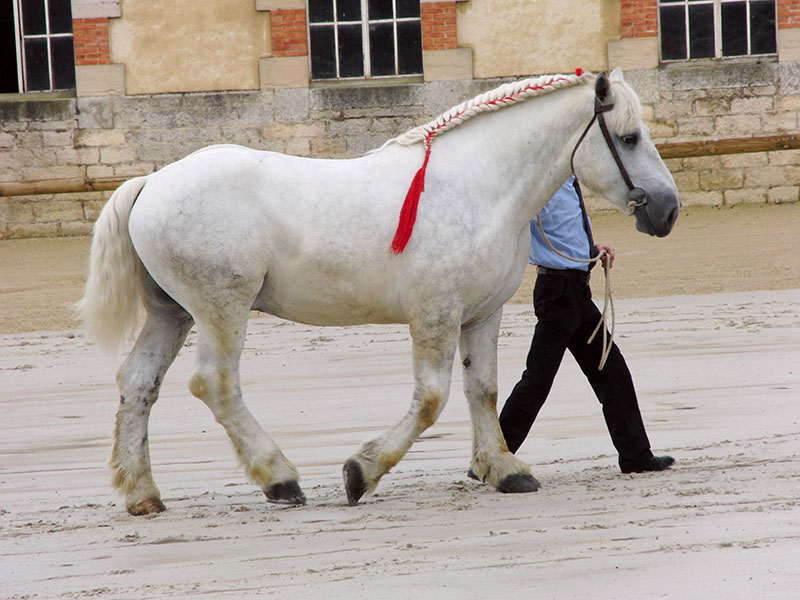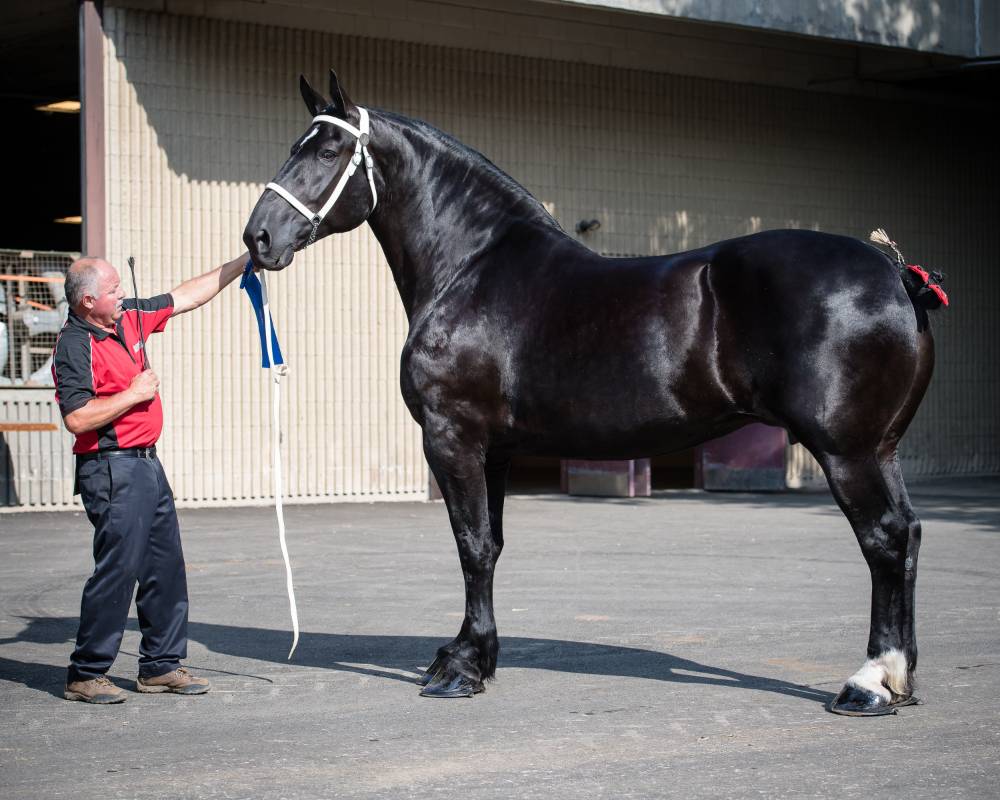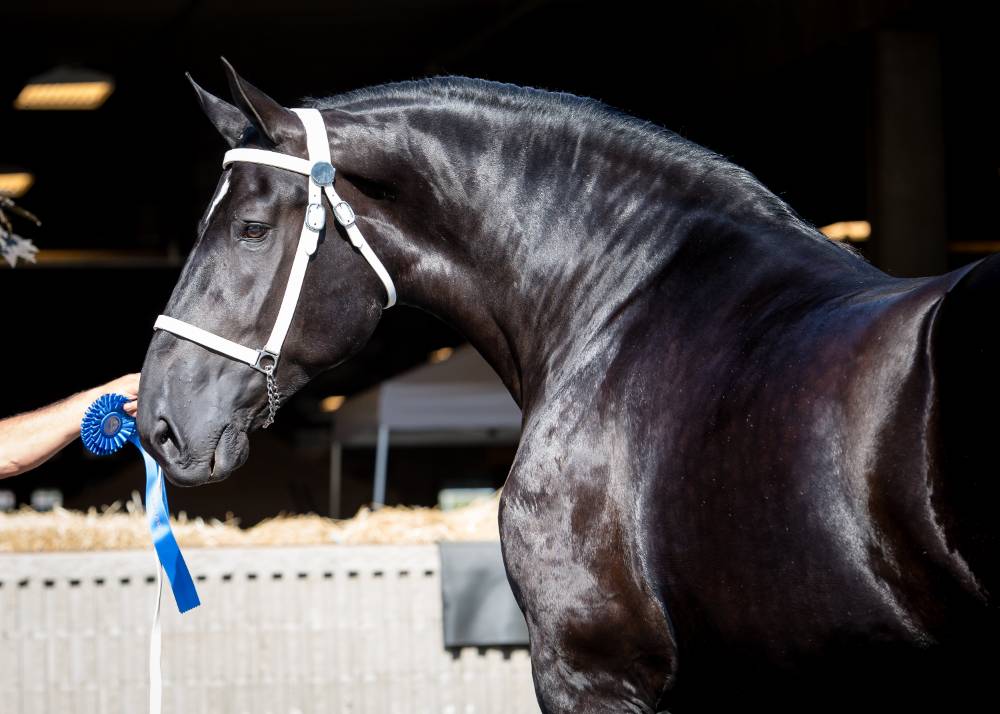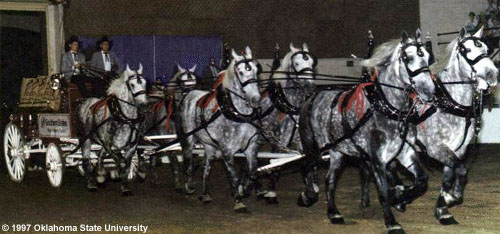Percheron Horses
 The exact origins of the Percheron have been lost over time. Some believe they are
descendants of the original horses found in the region during the Ice Age, others
that he is closely related to the Boulonnais horse used in the Roman invasion of Brittany.
Still others believe the breed is from Abd el Rahman's Arab stallions or part of the
horses used by the invading Moors at the battle of Poitiers which were divided among
the victorious French forces. Regardless of these ancient beginnings it is known that
at two points in history the native mares of the Le Perche region of France were mated
with Arab stallions, first during the eighth century and later during the Middle Ages. By the
time of the crusades the Percheron was widely recognized as outstanding for his substance
and soundness, as well as for his characteristic beauty and style.
The exact origins of the Percheron have been lost over time. Some believe they are
descendants of the original horses found in the region during the Ice Age, others
that he is closely related to the Boulonnais horse used in the Roman invasion of Brittany.
Still others believe the breed is from Abd el Rahman's Arab stallions or part of the
horses used by the invading Moors at the battle of Poitiers which were divided among
the victorious French forces. Regardless of these ancient beginnings it is known that
at two points in history the native mares of the Le Perche region of France were mated
with Arab stallions, first during the eighth century and later during the Middle Ages. By the
time of the crusades the Percheron was widely recognized as outstanding for his substance
and soundness, as well as for his characteristic beauty and style.
By the 17th century horses produced in Le Perche had attained widespread notoriety and were in demand for many different uses. The Percheron of this time showed less scale and was probably more active. He stood from 15 to 16 hands high.
 In the early 19th century the French government established a stud at Le Pin for the
development of army mounts. In 1823, a horse named Jean Le Blanc was foaled in Le
Perche and all of today's Percheron bloodlines trace directly to this horse.
In the early 19th century the French government established a stud at Le Pin for the
development of army mounts. In 1823, a horse named Jean Le Blanc was foaled in Le
Perche and all of today's Percheron bloodlines trace directly to this horse.
Figure 2. Image provided by Stacie C. Lynch Photography.
Percherons were first imported to the United States in 1839, by Edward Harris of Moorestown, New Jersey. The stallions, Normandy and Louis Napoleon, were imported to Ohio in 1851. Louis Napolean was later sold into Illinois and wound up in the hands of the Dunham family who were instrumental in forming the Percheron Association.
Thousands of Percherons were imported to America in the last half of the 19th century, and importations continued up until World War II. The Percheron quickly became the favorite of both the American farmer and the teamster who moved freight on the nations city streets. The Percheron was so popular that by 1930, the government census showed that there were three times as many registered Percherons as the other four draft breeds combined.
Following World War II, the invention of the modern farm tractor nearly made the breed extinct. As America modernized and mechanized, the Percheron was all but forgotten. However, a handful of farmers, including many Amish, dedicated to the preservation of the breed, kept it alive through the next twenty years of the draft horse depression.
The 1960's, saw a renaissance in the draft horse business as Americans rediscovered it's usefulness. Percherons are now back on small farms and working in the forest. Thousands of Percherons are used for recreation such as hayrides, sleighrides and parades.

Percherons are shown in competition hitching and halter classes at many state and county fairs across the country. Percherons are used in advertising and promotion of other businesses. They are a common sight on many streets as the carriage business flourishes in many of our larger cities.
Figure 3. Image provided by Stacie C. Lynch Photography.
References
Promotional Material, Percheron Horse Association of America, P.O. Box 141, Fredericktown, Ohio 43019. Phone: (614) 694-3602
Hendricks, B.L., 1995, International Encyclopedia of Horse Breeds, University of Oklahoma Press, Norman.

